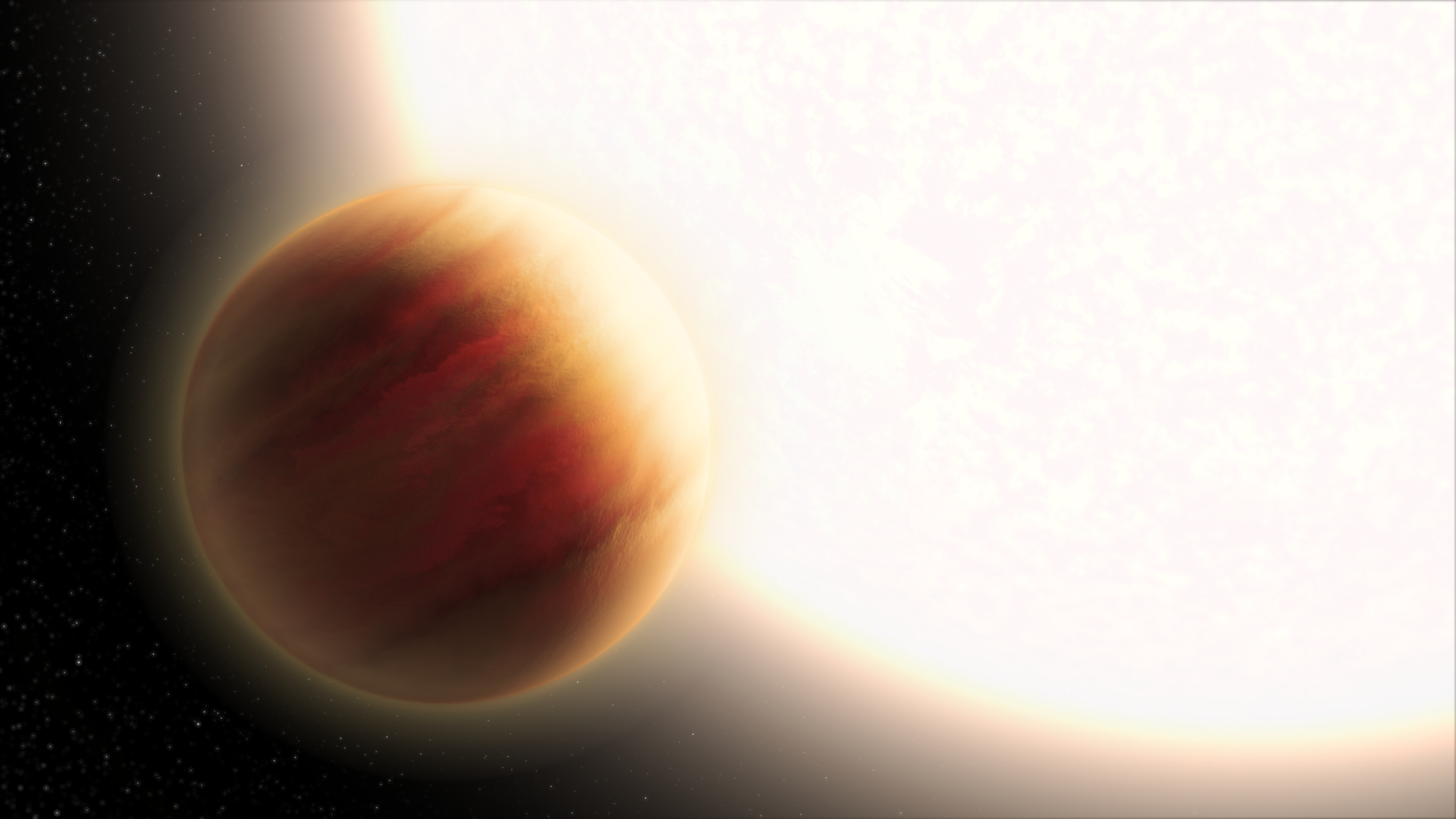
Once again, while we await the launch of the telescope that shall not be named, or really the telescope that should be renamed, scientists continue to find new ways and develop new instruments to get the data they were hoping to get from that telescope.
In a new paper published in Nature, a team of scientists has released the results of an analysis of spectroscopic data taken of exoplanet WASP-77Ab. This exoplanet is a hot Jupiter that was discovered back in 2012. It orbits extremely close to its parent star with an orbital period of about one and one-third of an Earth day. Fascinatingly, the parent star is a part of a binary system, but this planet only orbits WASP-77A.
Of course, being a hot Jupiter means that it’s a prime candidate for an atmospheric study with the instruments we have available. The Hubble Space Telescope has, in fact, been used to acquire spectroscopic data of this exoplanet; however, there have been two problems with this acquisition: 1) telescope time on Hubble is extremely difficult to get and 2) the instruments only measure water. Additionally, when Hubble’s instruments are used to get spectra of planets, the absorption lines are fuzzy and therefore not easy to use to determine the molecules in the atmosphere.
This brings us back to developing new instruments to take the place of the JWST until it launches and is up and running. At the Gemini South observatory in Chile, where the air is dry and thin, scientists have installed an instrument called the IGRINS, a clever acronym that rolls out to Immersion GRating INfrared Spectrometer. And the team involved with this paper used this instrument to observe WASP-77Ab’s thermal glow and collect spectroscopic data.
Unlike with the Hubble data, the absorption lines captured by IGRINS were perfectly clear, and from those lines, the team measured the amounts of water AND carbon dioxide. These measurements then allowed them to estimate the relative amounts of oxygen and carbon in the atmosphere. Lead author Michael Line notes: These amounts were in line with our expectations and are about the same as the host star’s. This work represents a pathfinder demonstration for how we will ultimately measure biosignature gases like oxygen and methane in potentially habitable worlds in the not-too-distant future.
From here, the team plans to measure the atmospheric composition of at least fifteen more exoplanets, building a database of gas abundances that they can compare against each other and against our own solar system to understand the origins and even evolution of plants. And maybe, just maybe, they can use that data to find biosignatures on other worlds and give us a hint that we’re not alone in the galaxy.
More Information
ASU press release
“A solar C/O and sub-solar metallicity in a hot Jupiter atmosphere,” Michael R. Line et al., 2021 October 27, Nature




 Join the Crew!
Join the Crew!
 Escape Velocity Space News
Escape Velocity Space News
0 Comments